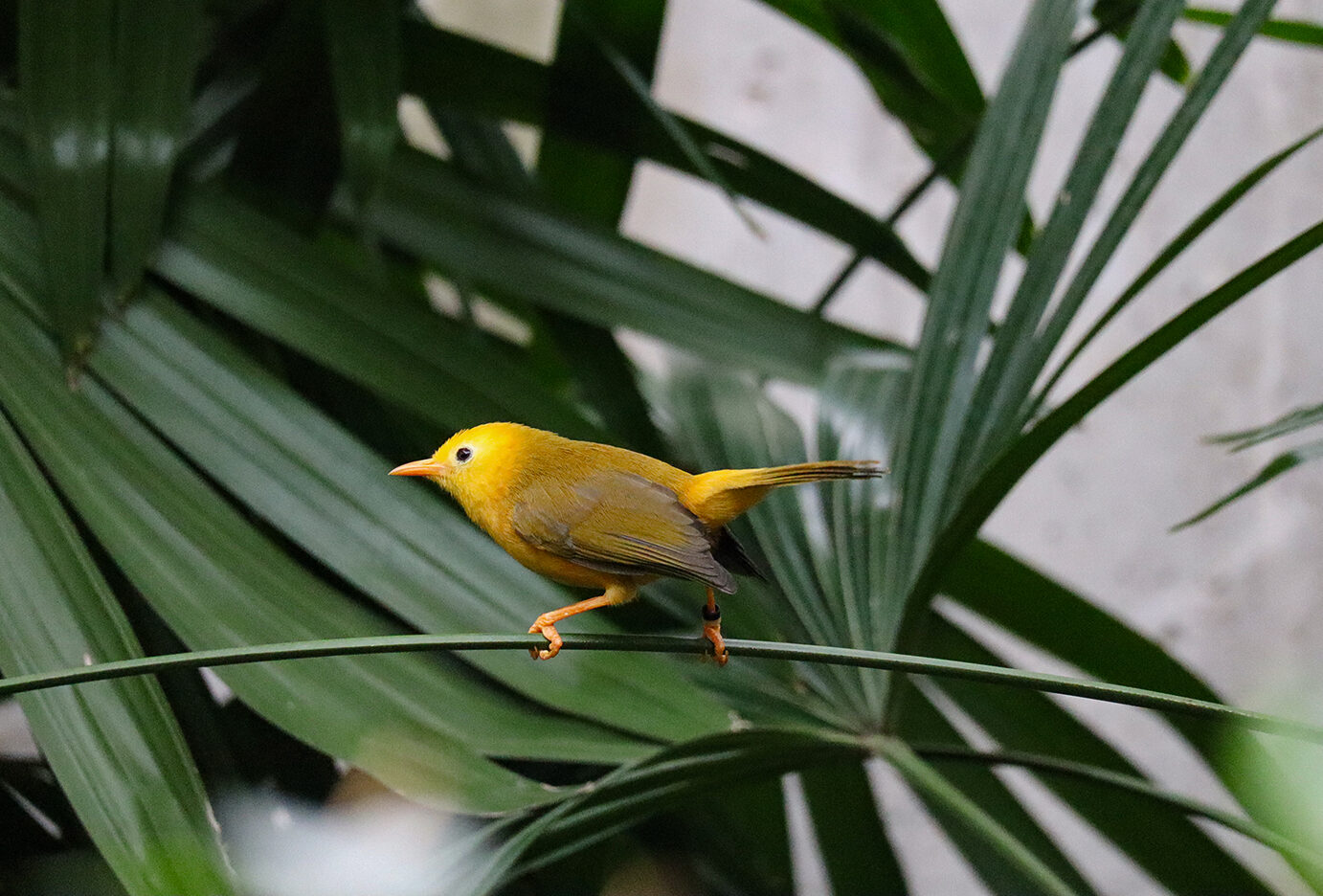I LIVE IN ASIA
The golden white eye is only found on the islands of Saipan and Aguijan in Northern Mariana Islands, located in the northwestern Pacific Ocean. This bird species can most often be found in forest areas, specifically limestone forests, as well as some shrublands.
I AM AN OMNIVORE
The golden white eye is not particularly a picky eater, they will forage in both the tree canopy and the understory. They will often feed on fruit, berries and insects, as well as some nectar.
GOLDEN WHITE EYES ARE SOCIAL
Golden white eyes are a somewhat social species who will sometime forage in groups of a few individuals. They typically live in small family groups consisted of a mated pair and their young.
GOLDEN GLOW
Golden white eyes are most notably recognized by their bright yellow and orange plumage. From the tops of their head to the tips of their toes, golden white eyes live up to their name.
HELPING THE GOLDEN WHITE EYE IN THE WILD
The Fort Wayne Children’s Zoo supports the Mariana Avifauna Conservation Project (MAC) and has sent knowledgeable staff overseas to contribute to research and conservation efforts surrounding native bird species of the Mariana Islands.
I AM IMPORTANT TO MY ECOSYSTEM
Because a portion of the golden white eye’s diet consists of nectar, this bird species plays an important role as a pollinator of some tree species in their ecosystem. They also are important in terms of seed dispersal and boosting biodiversity in the environment.

